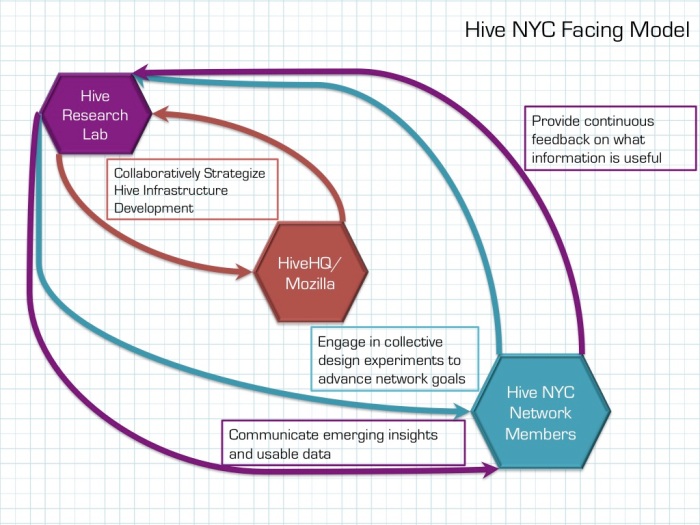The Lab’s research methods span qualitative and quantitative work including ethnographic field observation, semi-structured and informal interviews, program observation, case studies, social network analysis and network-wide survey data. But we’re not simply gathering these data – our approach seeks to rapidly feed information back into the network and use it within the context of collaborative work with Hive NYC members. Working groups utilize these empirical data as well as insights from the broader literature to think about how to advance network goals around creating youth trajectories and pathways and strengthening the Hive NYC as an innovation infrastructure. Ideas that come out of working groups then result in network-level design experiments that Hive Research Lab tracks, analyzes, and iterates with network members as we learn how they play out in practice.
This approach, which draws heavily from design-based research, reflects our desire to materially and immediately bring value and opportunities for improvement to the network as well as provide generalizable findings for the larger digital media and learning field. We know that the collective intelligence of the Hive NYC community, combined with empirical data and insights from existing research, can be leveraged to effectively strengthen Hive NYC, the Hive global community, and the work of innovative educators in the Digital Media and Learning community more broadly.
Our methodology can be understood by looking at the Hive Research Lab’s overall position and relationships within Hive NYC as well as within the field. As the figures below help to illustrate, the key to the Lab’s approach lies in the dynamic relationships it maintains, both with the Hive NYC Learning Network and with the broader Digital Media and Learning field.


